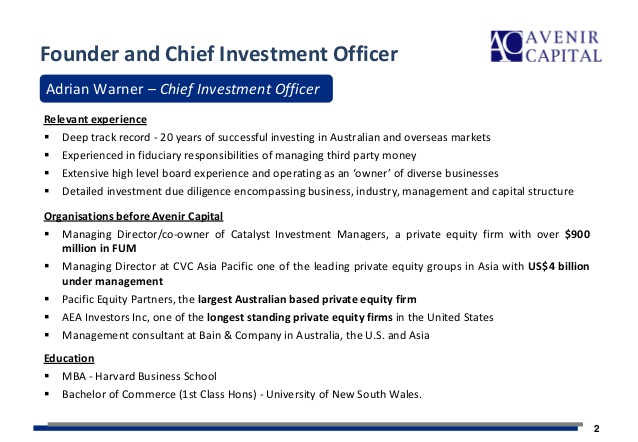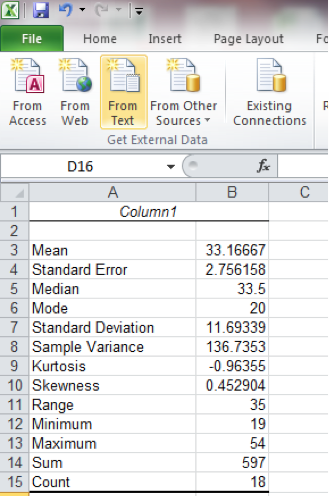
Although these bonds guarantee you’ll get your money back, keep in mind there’s a low return on these types of bonds. Bonds work by paying back a regular amount to the investor, also known as a “coupon rate,” and are thus referred to as a type of fixed-income security. For example, a $10,000 bond with a 10-year maturity date and a coupon rate of 5% would pay $500 a year for a decade, after which the original $10,000 face value of the bond is paid back to the investor. Companies can issue corporate bonds when they need to raise money. Instead of getting funds from a bank or elsewhere, the company or other borrower raises money from investors who buy its bonds. Imagine a bond that was issued with a coupon rate of 5% and a $1,000 par value.
“We’re already seeing leveraged loan defaults running well ahead of high-yield bond defaults in the current cycle,” he said in the note. Personally, I think these allocations are on the conservative side. Some investors might want to take on a bit more equity exposure if they’re able to tolerate the risk.
Investment-grade corporate bonds mean the company is less likely to default on its loans. There are essentially two sides to a bond investment, meaning the bondholder will receive two types of cash inflow from the bond investment over its term. These are the payment of the par value at maturity (often referred to as payment of the face value of the bond at term end), and the periodic coupon payments (also called interest income) from the bond. These coupon payments are contractually determined and clearly indicated in the bond issue documentation received by the bondholder upon purchase. The safest category of bonds are short-term US Treasury bills (T-bills).
Yield to Maturity (YTM)
Intermediate core-plus bond funds, on the other hand, generally stick with investment-grade credits and don’t have as much exposure to esoteric areas of the bond market as the other two categories. In most market environments, they’ve also had less downside risk. We consider intermediate core-plus bond funds more representative of the bond market overall and more suitable as core holdings. Bonds operate by issuers borrowing funds from investors through the issuance of bonds. Investors receive regular interest payments until the bond matures, at which point the issuer repays the principal. You should seek advice from a licensed or an exempt financial adviser on the suitability of a product for you, taking into account these factors before making a commitment to purchase any product.

Inflation-Protected Bonds, also known as Treasury Inflation-Protected Securities (TIPS), are issued by the government and are designed to protect investors from the erosive effects of inflation. Unlike traditional bonds, the principal highest paying accounting jobs value of TIPS is adjusted based on changes in the Consumer Price Index (CPI), a measure of inflation. These bonds protect investors from inflation, with interest payments and face value adjusting based on changes in inflation rates.
They outline the details of the loan, specifying how and when the borrower will repay the debt. They document the coupon rate, or the regular interest payments a bond investor will receive. And they indicate the time to maturity, the date when the investor will get back the original amount they paid, or the principal. Bonds tend to be less volatile than stocks, and are typically recommended to make up at least some portion of a diversified portfolio. Because bond prices vary inversely with interest rates, they tend to rise in value when rates are falling. If bonds are held to maturity, they will return the entire amount of principal at the end, along with the interest payments made along the way.
Income Bond
The most commonly cited bond rating agencies are Standard & Poor’s, Moody’s Investors Service, and Fitch Ratings. This means they are unlikely to default and tend to remain stable investments. For more information on bond trade and transaction data, you can also use TRACE, the Trade Reporting and Compliance Engine. TRACE is a U.S. government price dissemination service that provides access to transaction data for all eligible corporate bonds. Typically, no federal income tax is levied, and you may also benefit from state and local tax exemptions. Munis can be purchased through a broker, generally at a minimum of $5,000.
A secured bond pledges specific assets to bondholders if the company cannot repay the obligation. So if the bond issuer defaults, the asset is then transferred to the investor. A mortgage-backed security (MBS) is one type of secured bond backed by titles to the homes of the borrowers. Municipal bonds, or munis, are bonds issued by local governments. Contrary to what the name suggests, this can refer to state and county debt, not just municipal debt.
Characteristics of Bonds
Municipal bonds (“munis”) are issued by cities, states, and localities or their agencies. Munis typically will return a little more than Treasury bills while being just a bit riskier. To keep the first bond attractive to investors, using the $1,000 par example, the price of the old 5% bond would trade at a discount, say $900. Investors purchasing the 5% bond would get a discount on the purchase price to make the old bond’s yield comparable to that of the new 5.5% bond. Companies sell bonds to finance ongoing operations, new projects or acquisitions.
- For example, imagine a company that needs to borrow $1 million to fund a new project.
- These four bond types also feature differing tax treatments, which is a key consideration for bond investors.
- The Treasury sells them at auction to fund the operations of the federal government.
- Bonds have long been a trusted investment vehicle for many investors.
- Bonds are issued by governments, municipalities, and corporations.
In India, most State, and Central government bonds are issued using this mechanism and hence these are considered secured. Various corporate houses also issue bonds using this mechanism but those can either be secured by a charge or lien on any asset or unsecured, depending upon the terms of the issue. Join us as we unravel the intricacies of different types of bonds including, government bonds, corporate bonds, zero-coupon bonds, convertible bonds, inflation-indexed bonds, and more. Two features of a bond—credit quality and time to maturity—are the principal determinants of a bond’s coupon rate.
Treasuries can trade in a secondary market and the same security can be bought and resold by different investors many times before it reaches maturity. The U.S. insures all Treasuries, making them virtually risk free. Bond prices tend to be less volatile than stocks and they often responds more to interest rate changes than other market conditions.
But as you near retirement and have less time to ride out rough patches that might erode your nest egg, you’ll want more bonds in your portfolio. Bonds pay interest at regular, predictable rates and intervals. For retirees or other individuals who like the idea of receiving regular income, bonds can be a solid asset to own. A bond is a fixed-income instrument, which is one of the three main asset classes, or groups of similar investments, frequently used in investing. Bond investors face benefits and risks when selecting to invest in bonds over other securities.. People who want to invest in bonds can consult research by companies that analyze and rate an issuer’s credit quality.
Callable bonds also have an embedded option, but it is different than what is found in a convertible bond. A callable bond is one that can be “called” back by the company before it matures. Assume that a company has borrowed $1 million by issuing bonds with a 10% coupon that mature in 10 years. Bonds that are not considered investment grade but are not in default are called “high yield” or “junk” bonds. These bonds have a higher risk of default in the future and investors demand a higher coupon payment to compensate them for that risk. Local governments and municipalities may issue debt too, known as municipal bonds.
Collateralized Debt Obligations (CDOs)
Duration is a measurement of a bond’s interest rate risk that considers a bond’s maturity, yield, coupon and call features. These many factors are calculated into one number that measures how sensitive a bond’s value may be to interest rate changes. When a bank issues a mortgage, it rarely keeps ownership of the mortgage. The bank will sell the mortgage to a government agency or investment bank. They are categorized into investment-grade or high-yield classes. I learned a lot about finance after working for a digital marketing company specializing in investing and trading stocks, forex, etc.
Charter and DoorDash Throw Their Weight Around – The Motley Fool
Charter and DoorDash Throw Their Weight Around.
Posted: Wed, 13 Sep 2023 14:33:00 GMT [source]
Because it is unlikely that coupons will be reinvested at the same rate, an investor’s actual return will differ slightly. Calculating YTM by hand is a lengthy procedure, so it is best to use Excel’s RATE or YIELDMAT functions (starting with Excel 2007). When a firm goes bankrupt, it repays investors in a particular order as it liquidates. After a firm sells off all its assets, it begins to pay out its investors. Senior debt is debt that must be paid first, followed by junior (subordinated) debt.
What Are the Different Types of Bonds?
Some types of bonds also offer other benefits, such as the ability to convert the bond into shares in the issuing company’s stock. A bond represents a promise by a borrower to pay a lender their principal and usually interest on a loan. Bonds are issued by governments, municipalities, and corporations.
It protects investors from interest rate risk because the rates move with prevailing market rates. The interest rate of these bonds is subject to market fluctuations https://1investing.in/ and macroeconomic parameters. High-yield Bonds
Companies issue high-yield bonds with lower credit ratings and are riskier than investment-grade bonds.
A glaring exception to this rule is the 2008 housing market crash. Today, institutions have regained a lot of trust from investors. Investment-grade means the local government is less likely to default, but they typically pay lower interest. As a result of these two types of inflow, bond valuation requires two different time value of money techniques—specifically, present value calculations—to be computed separately and then added together. Let’s say that you buy a $1,000 bond that was issued by Apple Inc. at 5% interest, paid annually, for 20 years.
Bond ETFs
A change in the fundamental factors underlying the Morningstar Medalist Rating can mean that the rating is subsequently no longer accurate. There are several ways to buy bonds, including purchasing them through a broker or financial advisor, buying them directly from the issuer, or investing in bond mutual funds or exchange-traded funds (ETFs). Before buying bonds, you must research the issuer’s creditworthiness and evaluate the bond’s risk and return characteristics to make an informed investment decision. Zero-Coupon Bonds
Zero-coupon bonds are issued at a discount to their face value and do not pay periodic interest.
Zeros are usually sold at a discount from face value, so the difference between the purchase price and the par value can be computed as interest. There are two ways that bondholders receive payment for their investment. Coupon payments are the periodic interest payments over the lifetime of a bond before the bond can be redeemed for par value at maturity. Many investors make only passing ventures into bonds because they are confused by the apparent complexity of the bond market and the terminology.

No comment